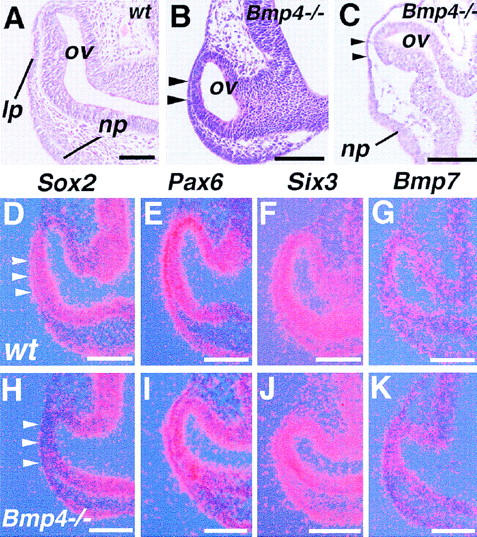Figure 3.

Eye phenotypes of late surviving Bmp4tm1 homozygous mutant embryos. (A) Morphology of the normal eye of a 27-somite-stage embryo (9.75 dpc). (ov) Optic vesicle; (lp) lens placode; and (np) nasal placode. (B) Histological section of a mutant embryo with 25 somites at 10.0 dpc. No sign of lens placode formation is seen at the site of contact between the ectoderm and the optic vesicle (arrowheads). (C) Another mutant embryo at 10.5 dpc showing no lens placode formation (arrowheads). Note that the nasal placode is formed. (D–K) Gene expression in the eyes of 22- to 24-somite-stage wild-type (wt) (D–G), and 9.5–10.0 dpc homozygous Bmp4tm1 mutant embryos (Bmp4−/−) which formed 22–25 somites (H–K). Note that, although upregulated in the wild-type presumptive lens ectoderm by the 24-somite stage (D, arrowheads), Sox2 fails to be induced in the mutant ectoderm and the optic vesicle (H). (E–G,I–K) Expression of other putative regulatory genes, including Pax6 (E,I), Six3 (F,J), and Bmp7 (G, K) is not apparently changed. Each panel is representative of results from at least three wild-type or five mutant embryos. Bar, 100 μm (A–C); 50 μm (D–K).
